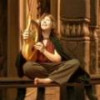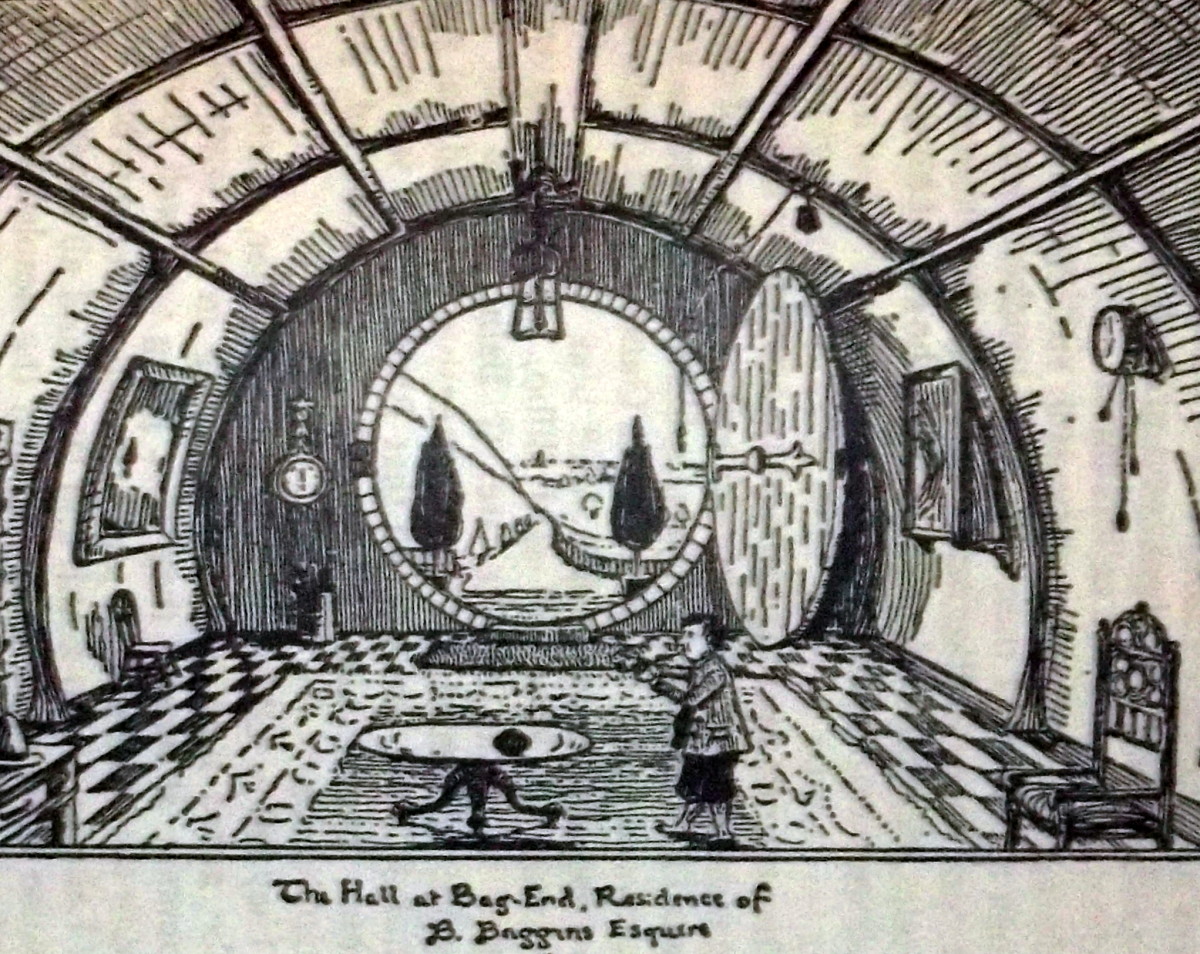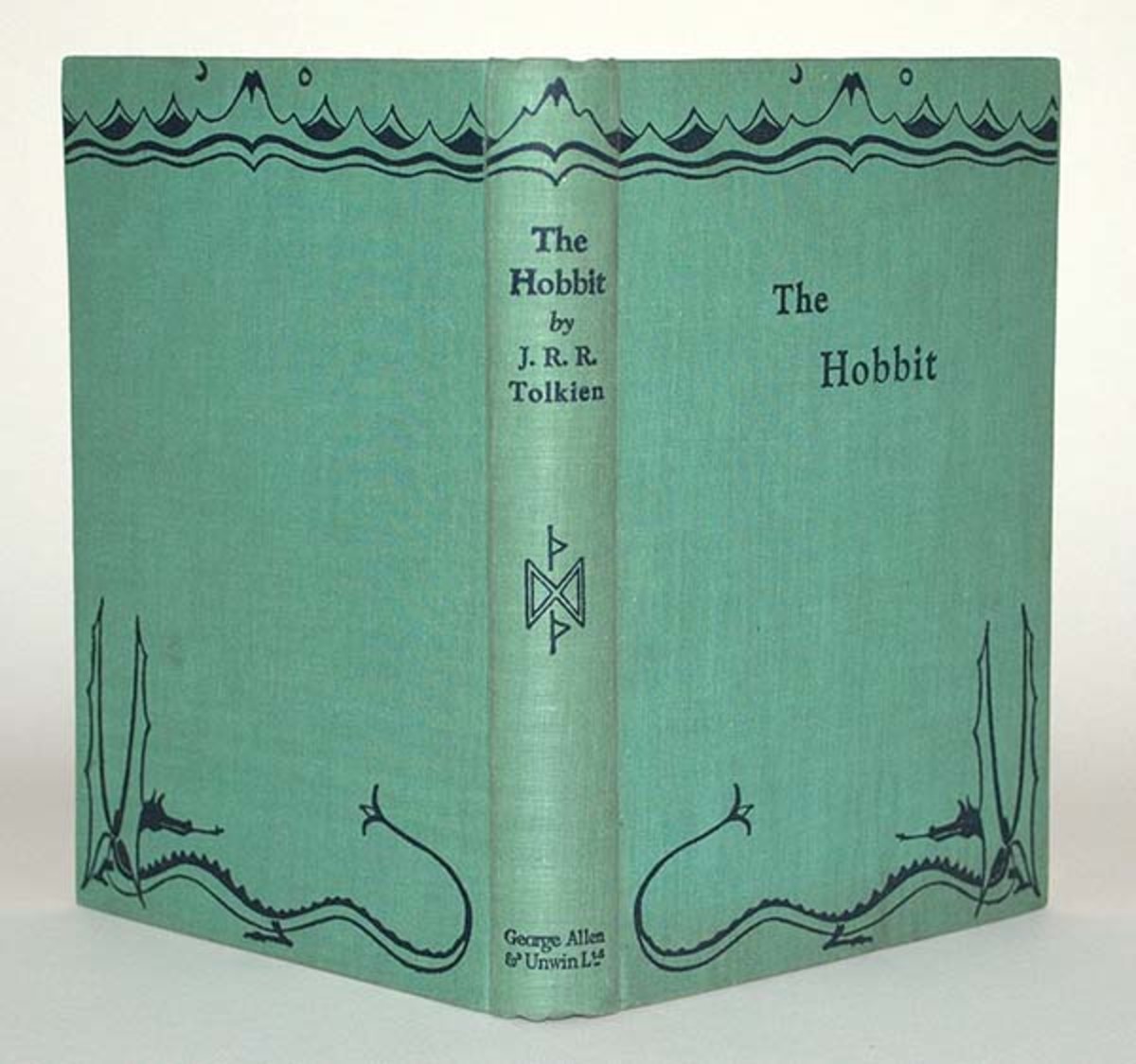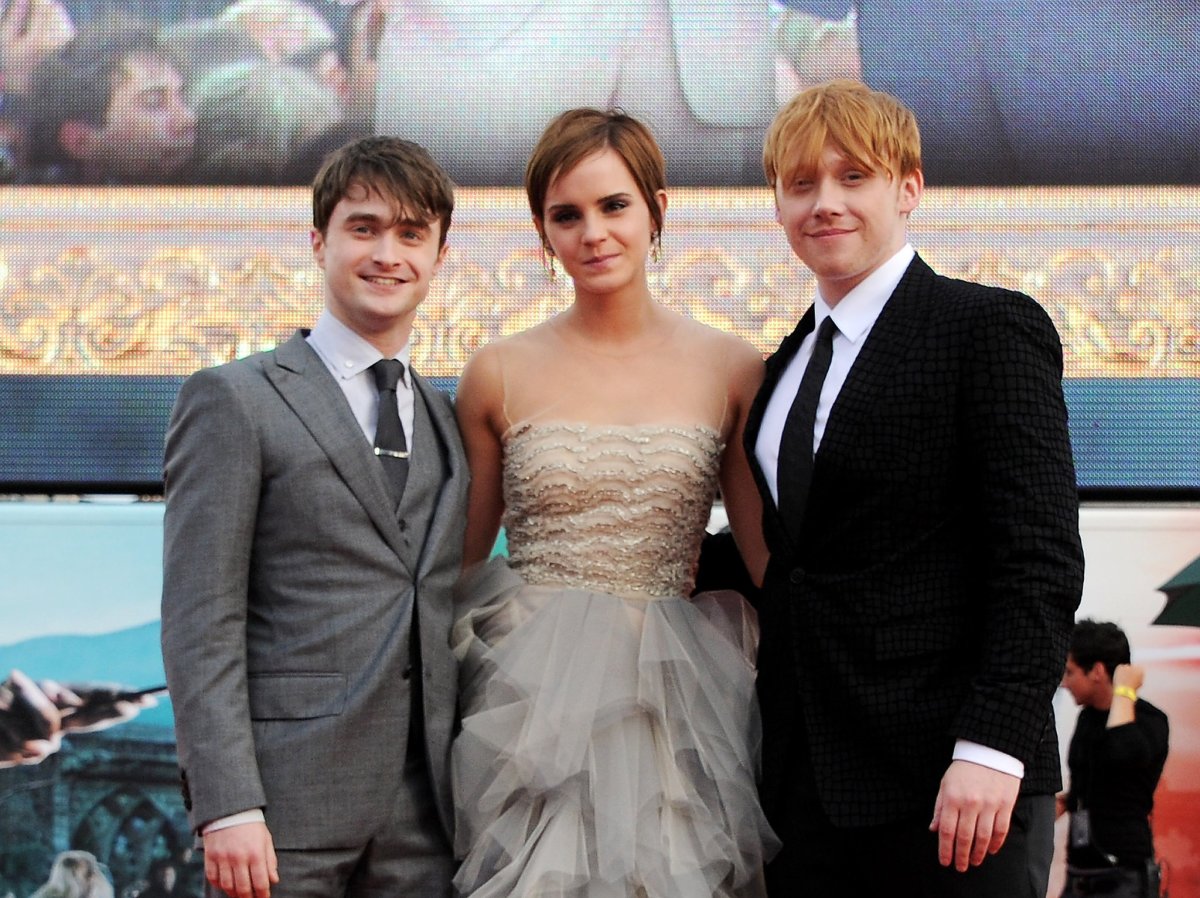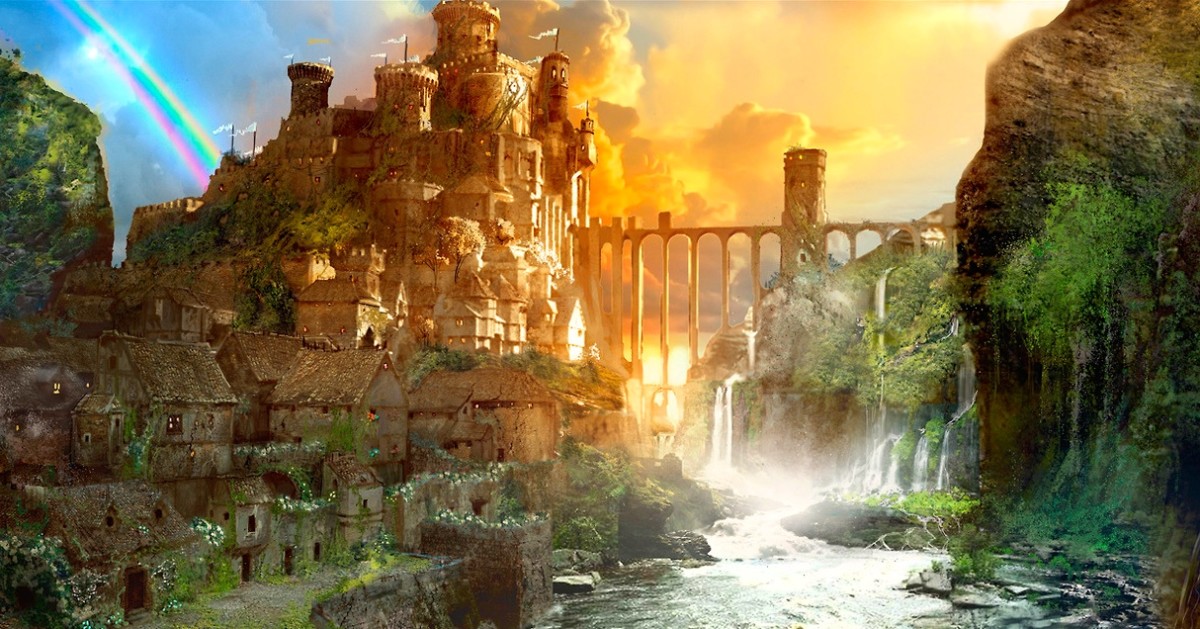- HubPages»
- Entertainment and Media»
- Movies & Movie Reviews»
- Science Fiction & Fantasy Films
The Hobbit: Characters in the Book vs. the Films
Back to Bag-End
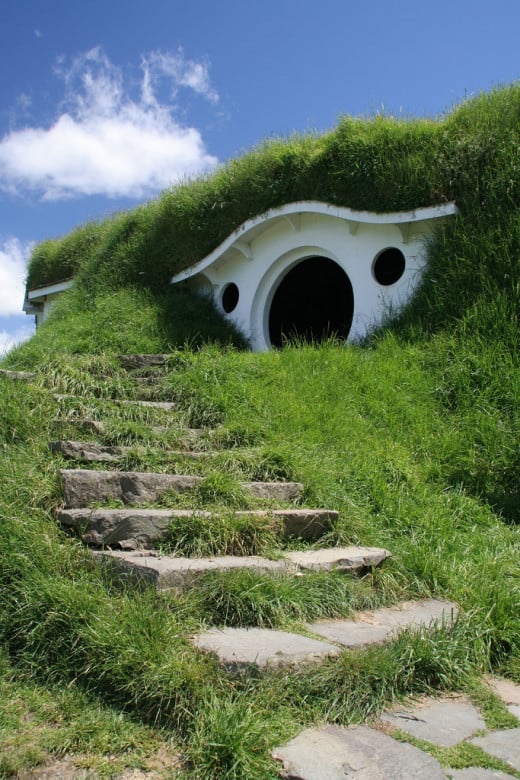
Who's Who in the Hobbit
Longtime Tolkien fans were a little perplexed in 2011 when rumors started leaking out of New Zealand concerning the Hobbit film's cast list.
- Saruman? Invented for The Lord of the Rings.
- Frodo? Sir Not-Appearing-in-This-Book.
- Alfrid? Waiiiit...not that Anglo-Saxon King?
So, before we embark on Peter Jackson's parallel universe to Tolkien's fantasy romp, let's take a quick head count. This won't be exhaustive, but at least it should be illuminating.
Characters are listed roughly in the order of appearance.
Bilbo Baggins
If you don't know who this chap is, why are you reading this article?
Okay, okay. Son of Belladonna Took and Bungo Baggins (could be worse: see "Bingo"), Bilbo was a fabulously wealthy bachelor who left Bag-end one day without even a pocket-handkerchief.
Furry feet. Slightly pointed ears. (Tolkien, Letters #27.) Had a knack for disappearing from unpleasant relatives. Likes poetry. Unfortunately, Peter Jackson doesn't, so I doubt we'll hear much in the films.
Frodo Baggins
Sir Not-Appearing-in-This-Book gets a well-deserved cameo. He's not actually a character in the book of The Hobbit. However, near the end of The Lord of the Rings, Bilbo passes his diary to Frodo to "knock into shape." This, of course, is the fictional text of The Hobbit.
We should expect that scene in the film, since Sir Ian Holm is back to play "old Bilbo."
Gandalf the Wizard
The Hobbit was a fairy tale, so of course it needed a wizard. Gandalf's name means "wand elf," although I would not examine that meaning too closely.
In The Lord of the Rings, we learn that Gandalf is an istari, a sort of angel disguised in human form. At the time when Tolkien wrote The Hobbit, he was simply an old wise man and a card-carrying member of "The White Wizards."
Trivia: the names of Gandalf and of most of the Dwarves were lifted from stanzas 11-18 of the Norse Poetic Edda, Völuspá.
Thorin & Company
Tolkien does not give us all that much information on the thirteen Dwarves in The Hobbit, apart from the colors of their party hats and their preferred musical instruments (Thorin, a golden harp; Bifur and Bofur, clarinets).
So here's the whole merry crew: Thorin Oakenshield, Balin, Dwalin, Fili, Kili, Dori, Oin, Gloin, Ori, Nori, Bifur, Bofur, Bombur.
Well, we get a few other details. Balin and Dwalin are quite elderly; Fili and Kili are Thorin's sharp-eyed young nephews. Oin and Gloin are in charge of the tinderbox. Balin becomes Bilbo's best friend among the company.
That's about it. Everything else, Peter Jackson has to make up. He's good at that.
Thror, Thrain, Dain Ironfoot
Thorin is son of Thrain and grandson of King Thror, the last King Under the Mountain.
After Smaug the Dragon attacked and sacked their kingdom delved into the roots of the Lonely Mountain, they escaped through a secret tunnel and spent many years wandering the world as exiles. Both eventually set out looking to do a spot of dragon-slaying, but perished on the way home: Thor was killed by the goblins of Moria, while Thrain was captured by the Necromancer and died in his dungeons.
Dain Ironfoot, Thorin's cousin, was the chief of another batch of exiles that lived in the Iron Hills a few days' march from the Lonely Mountain. Dain had fought in the Goblin Wars outside of Moria to avenge Thror's death, but refused to sacrifice himself by entering Moria or (apparently) tangling with the dragon.
Tom, Bert, William
Another symptom of the fairy-tale style of The Hobbit is Bilbo's dangerous yet comical encounter with three uncouth trolls.
Bert? Really?
They are a useful plot device, giving Bilbo a chance to cut his teeth as a burglar, and providing Thorin, Gandalf and Bilbo with shiny magic swords liberated from the trolls' hoard.
The trolls in The Lord of the Rings don't talk, don't chew mutton, and don't have pockets with talking purses.
Elrond Half-Elven (and Elros)
Near the the beginning and end of his journey, Bilbo stops at Rivendell, where its master — never called "Lord Elrond" by Tolkien — provides advice and assistance. Elrond is not literally half-elven, but has human and elf ancestors on both sides. In The Hobbit, Tolkien describes Elrond thus:
He was as noble and as fair in face as an elf-lord, strong as a warrior, as wise as a wizard, as venerable as a king of dwarves, and as kind as summer.
Peter Jackson makes him as cranky as a bullfrog to add dramatic tension in LOTR, but he's really a rather gracious fellow, also quite spry for someone 6440 years old.
In Tolkien's post-Hobbit writings, he sketched out a quite tragic history for Elrond and his brother Elros, who died at the ripe old age of 500. That puts Elros a bit before Bilbo's day. I'm therefore surprised to see his name in the cast list.
Trivia: At the time of The Hobbit, Elros' great-great-great-great-[x60 or so] grandson, ten-year-old Aragorn, would have been living with his mother in Rivendell under Elrond's protection.
The White Wizards (The White Council)
Gandalf was an enormously inconvenient character for Tolkien: as long as he was around, it was difficult to get the party members into serious trouble. So Jackson was always chucking him off bridges, sending him away on eagles or magic horses, imprisoning him, etc.
During The Hobbit, Gandalf leaves the Dwarves when they reach Mirkwood and doesn't explain where he's going. We get a tiny, tiny explanation on nearly the last page of The Hobbit, when Bilbo and Gandalf stop by Rivendell during the return journey:
It was in this way that [Bilbo] learned where Gandalf had been to; for he overheard the words of the wizard to Elrond. It appeared that Gandalf had been to a great council of the white wizards, masters of lore and good magic; and that they had at last driven the Necromancer from his dark hold in the south of Mirkwood.
That's it. That's the only reference in The Hobbit to what Gandalf was doing while he was away. We can be quite sure that director Peter Jackson won't leave it at that, however; the name "Saruman" is a tip-off.
When writing the sequel to The Hobbit, Tolkien decided that the Necromancer was Sauron, giving him a villain for his new saga, The Lord of the Rings. Accordingly, Tolkien rejiggered this bit of story and turned "the white wizards" into the White Council, with Saruman at its head, Galadriel and Elrond and Gandalf as members. They tried to drive the Necromancer from Mirkwood, but instead Sauron pretended to be defeated and slipped away to Mordor.
There is no doubt that Peter Jackson intends to dramatize this bit of backstory, never told in any great detail by Tolkien.
The Necromancer
See above. In The Hobbit, Tolkien had not really worked out much about him except to emphasize that he was a big scary badass something-or-other with a stronghold in southern Mirkwood that you didn't want to go anywhere near.
Later, the Necromancer was converted to Sauron, an evil overlord character from Tolkien's early Silmarillion writings.
Except that originally he was Thu, a demonic kitty cat. Quite an upgrade.
Trivia: Jackson seems to have misread The Lord of the Rings, imagining that Sauron was only a flaming red eye. In fact, while Frodo sensed Sauron from afar as a searching Eye, that was more spiritual than literal. Gollum recalls that Sauron only had four fingers on "the Black Hand."
It appears that Peter Jackson may correct his mistake in The Hobbit and give the Necromancer a physical body.
The Great Goblin, Bolg
The Great Goblin is the unnamed chief of the goblins of the Misty Mountains, who waylay Bilbo and the Dwarves. Bolg is the chief of the goblins of Moria, whose father killed Thorin's grandfather Thor. Bolg's Moria goblins show up near the end of The Hobbit to wreak havoc.
The "goblins" of The Hobbit, who break into not one but two silly songs mocking the dwaves, are the same as the "orcs" in the more serious Lord of the Rings. They are another indicator of how Tolkien's literary style evolved. We can explain away the variations by assuming that Bilbo's writing style and vocabulary were rather more flippant than Frodo's.
Gollum
Hates the Bagginss, forever!
Radagast the Brown
Radagast the Brown is played by Sylvester McCoy, one of my very favorite Doctor Whos (the seventh), so I'll forgive Jackson throwing in Sir Not Appearing in the Book.
He gets a brief mention in Tolkien's Hobbit when Gandalf is doing some fast-talking to get lodgings from Beorn ("perhaps you have heard of my good cousin Radagast.")
In The Lord of the Rings, Saruman uses Ragadast as his messenger to summon Gandalf to Isengard. Radagast is a rather timid wizard (istari) who doesn't really get involved in fighting. However, he can talk to birds, and accidentally helps spring Gandalf from Saruman's clutches when he asks the King of the Eagles to fly to Isengard with a scouting report.
I was expecting Peter Jackson to coopt Radagast into the White Council, but I don't see him on the White Council movie poster (above right), so perhaps he's just going to hang out with the Eagles.
Beorn
Beorn is one of those wonderful fairy-tale elements of Tolkien's early writings that doesn't quite fit the Lord of the Rings mythos: a gruff, burly man whom Gandalf and the Dwarves have to ask for shelter during their journey across the wild.
He's a descendant of the same rugged northern race that spawned the Riders of Rohan and the Woodmen of Mirkwood, the equivalent of Vikings compared to the "Romans" of Gondor and Númenor.
Beorn also turns into a bear. (His name means "Bear" in Anglo-Saxon.)
King Thranduil
In the book of The Hobbit, Thranduil is simply known as "The Elvenking," a chieftain of rustic northern Elves living in northeast Mirkwood. In The Lord of the Rings, with the invention of the character of Legolas, he acquires a name and a son.
The Elvenking holds Thorin & Company prisoner for crimes against hygeine. Well, no, actually, he holds them as trespassers, and also because Elves and Dwarves have bad blood between them going back to the First Age.
Thranduil was not being entirely paranoid: he emulated the great elf-king Thingol of the First Age, who was slain by dwarves.
Smaug
A dragon. Can't wait to see him.
He's the final dungeon boss, er, enemy in The Hobbit. 171 years before that story begins, Smaug sacked the Dwarves' old home, the Lonely Mountain.
Galion, Lindir
Galion is the Elvenking's "butler" in The Hobbit. He gets the captain of the guards drunk, and they both fall asleep, allowing Bilbo to spring the Dwarves from captivity.
Lindir is a minor Rivendell Elf mentioned once during the "Council of Elrond" chapter of The Lord of the Rings.
Alfrid, Braga, Bain, various "z" names
These are pure Peter Jackson inventions, probably very minor characters.
From their names, I'd guess that the first two are men (Woodmen of Mirkwood, perhaps?), Bain is an extra dwarf, and all the z-names are probably goblins.
___________
So, what are your expectations for the new movie? No spoilers, please; this was written on November 28, 2012, and most of the readers of this page have not yet seen the film.
